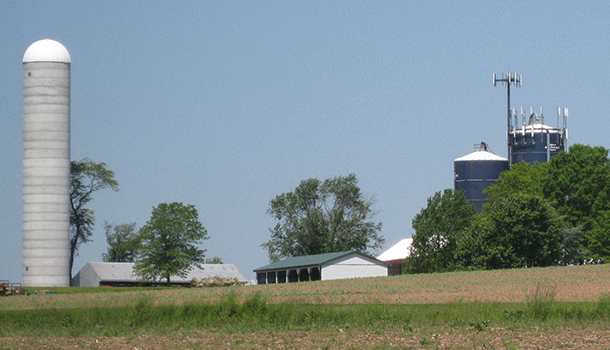
(Photo: csullens/Flickr)
Editor's Note: Greg Norton co-chairs the Elevate Rural CA working group, which has identified high speed connectivity as one of its top three concerns.
The deployment of broadband infrastructure supporting speed-of-commerce connectivity is among the most critical missing components needed to drive economic development in California’s rural communities. Broadband access is essential to connecting rural communities to the 21st century economy. Yet the barriers to deploying infrastructure continue to inhibit access in some of California’s most disadvantaged communities in both rural and urban areas.
The Rural County Representatives of California (RCRC) represents 36 of California’s 58 counties, covering approximately 56 percent of the state’s land mass. It is estimated that merely 47 percent of California’s rural households within this population area have access to high-speed broadband.
I recently had the opportunity to speak about this crisis on a panel before the California Emerging Technology Fund (CETF) titled “The Imperative of Digital Inclusion.” In their 2016-17 Annual Report, CETF identified internet access as a “21st Century Civil Right,” and the internet is now firmly established as an operational epicenter for business, government, education, information, and basic services.
Access to broadband provides multiple economic and social benefits to rural residents by allowing access to vital government services and resources. Broadband contributes to job creation, economic growth and business investment, improves access to critical healthcare services, and expands access to educational resources and opportunities. Broadband access for farmers and ranchers would allow for improved stewardship of our natural resources through the use of technology to monitor and measure water and soil conditions and usage.
Local governments have joined forces in advocating for the acceleration of broadband deployment in California’s rural communities, and have outlined a number of key provisions. First, the technology deployed must be an appropriate fit for the area — high-speed fiber connections are imperative. Second, we must look to rural electrification as a model, and fund local municipalities to develop the infrastructure, and provide the services. Lastly, local governments should be empowered to step up as lead partners with the federal government to formulate and execute upon strategies that achieve broad-based access to high-speed services.
When high-speed connectivity is unavailable, too slow, or too expensive, it has a significant impact on the economic success and quality of life in these communities. As a result of the digital divide, rural communities are suffering, and struggle to tap basic resources including educational opportunities, medical care, economic and trade opportunities, and vital government services, including public safety.
We’re aware of the challenges involved in deploying adequate capacity across the broadband infrastructure in California’s rural communities. Rugged terrain, remote locations, and sparse populations are all factors that lead to increased deployment and maintenance costs. However, these challenges must be addressed in order to provide this fundamental socio-economic tool and resource to the residents within these communities. While technological advances such as 5G are beneficial to the overall industry, this type of innovation only serves to create a greater chasm between the haves and the have-nots. Priority should be focused on an equitable deployment of appropriate level services throughout the state, not on the next big thing for the fortunate few.
Community-driven broadband partnerships offer a solution. We can quickly resolve this problem by including local communities in the process of choosing the appropriate means to deliver the requisite broadband to ensure quality of life, business growth, and household capital formation. In partnership with the federal government, communities can choose the approach to delivering broadband best suited to their specific needs. Options could include innovative public-private partnerships, other government financing, or through the enforced requirement of leveraging infrastructure investments made with federal dollars by incumbent providers. The Federal Communications Commission has deployed and earmarked enormous amounts of capital to closing the urban-rural divide that exists with access to broadband. Despite these massive influxes of capital, too many rural communities remain without access.
It is imperative that ubiquitous middle-mile fiber optic cable technology is provided at the speed of commerce to allow small to medium-sized businesses to compete in the digital global marketplace, and attract economic development opportunities to California’s rural communities. Although we have made advancements in expanding broadband, there is more to do to ensure that universal access to broadband services is realized for all rural residents. Now is the time — we must allow local communities to develop high-speed solutions that fit their rural communities’ broadband infrastructure needs. Broadband is fundamentally necessary to a community’s economic health, quality of life, and opportunity at prosperity.
Greg Norton is President and CEO of Rural County Representatives of California.

